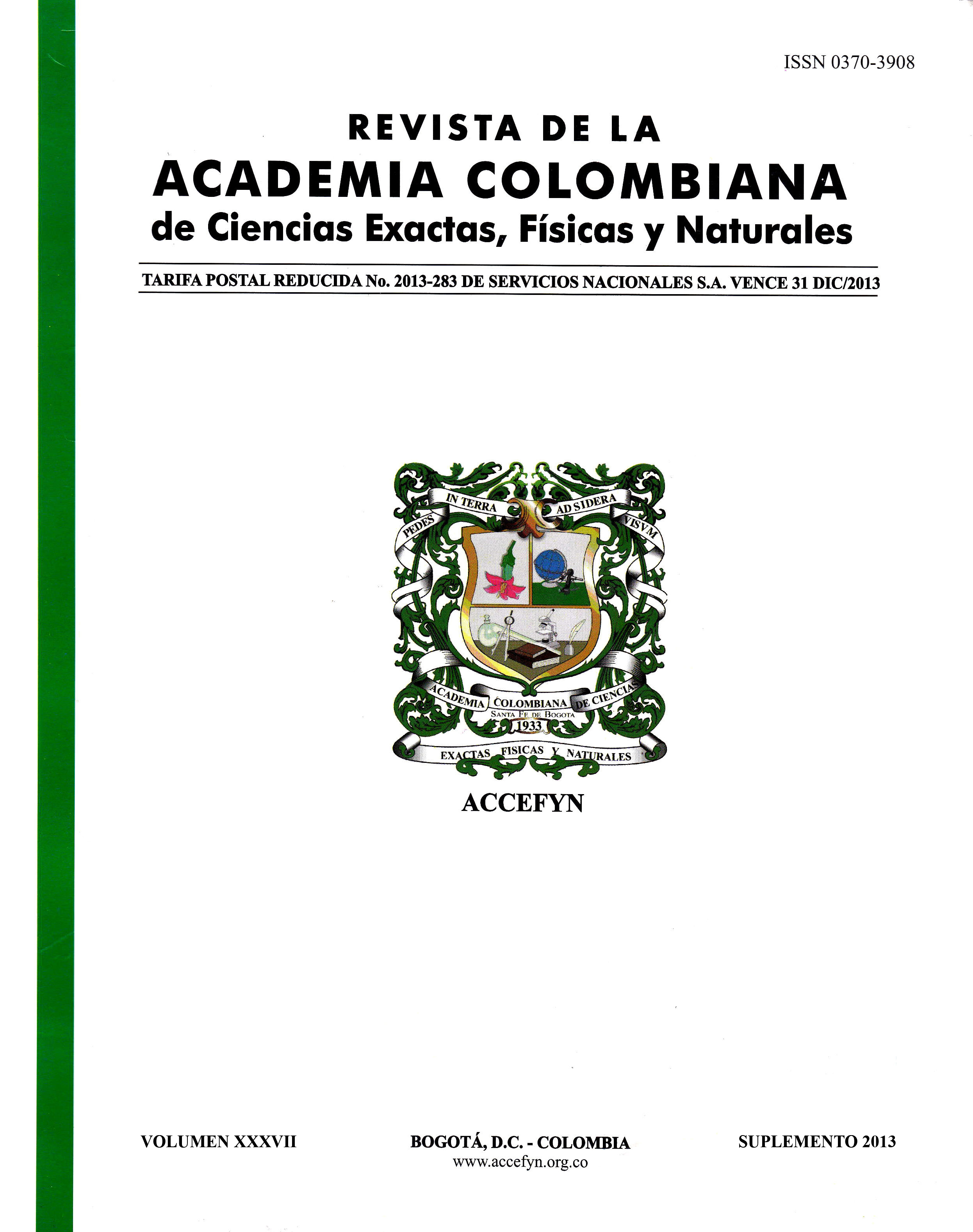Resumen
En este trabajo se presenta la solución de la ecuación de Poisson-Boltzmann utilizando el método de Lattice-Boltzmann. Con el fin de obtener la solución, utilizamos una redefinición del tensor nº, el cual se declara como un tensor simétrico, cuyas componentes diagonales se eligen como la segunda derivada en el tiempo del primer momento de la función de distribución y las componentes fuera de la diagonal dan cuenta de los términos no lineales. Los resultados se presentan en dos dimensiones empleando el esquema de rejillas de velocidades D2Q9. Se obtienen resultados para el campo escalar y su gradiente usando varios tipos de condiciones iniciales.
Referencias
Lundstrom M. S., Schuelke R. J. , 1982, Modeling semiconductor heterojunctions in equilibrium, Solid State Electron, 25 683-691.
Luo G., et. al, 2006, Ion Distributions near a Liquid-Liquid Interface Science, 311216-218.
Cui Y., et. al, 2001, Nanowire Nanosensors for Highly Sensitive and Selective Detection of Biological and Chemical Species, Science, 293 1289-1292.
Lu B. Z. et al., 2008, Recent progress in numerical methods for the Poisson-Boltzmann equation in biophysical applications, Commun. Comput. Phys. 3 973-1009.
Wang M., Wang J. and Chen S., 2007, Roughness and cavitations effects on electro-osmotic flows in rough microchannels using the lattice Poisson-Boltzmann methods, Journal of Computational Physics, 226 836-851.
Bathnagar P. L., Gross E. P. and Krook M., 1954, A Model for Collision Processes in Gases. I. Small Amplitude Processes in Charged and Neutral One-Component Systems, Phys. Rev. 94 511-525.

Esta obra está bajo una licencia internacional Creative Commons Atribución-NoComercial-SinDerivadas 4.0.

